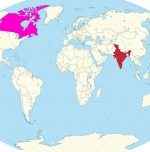Element of a strong resume

If you want a potential employer to see you as an organized, intelligent, high-performing professional, you need to make that clear with your resume.
Basic elements of a resume choose the headings that best reflect your experience.
Your headings do not have to come directly from this list, as it is not comprehensive.
It’s a good idea to frame your resume by adding a cover letter.
In it, you can expand on why you’re a great fit for the position and show any research you’ve done on the company.
You can do that by organizing your resume well and adding some key elements, including these:
Multiple formats
In these days, you’ll need to provide your resume in various formats to get the word out to employers.
You should have digital resume, which you can upload easily to job search websites like Indeed.
Consider making two versions of an electronic resume: one that is text only with spacing to indicate new sections, and one that is formatted as you would like.
You should also have a printed resume on hand to provide during interviews.
Summary up top
You have a moment to get the attention of your resume reviewer before he or she needs to move on to the next resume in the stack.
Make the most of that moment by offering a short profile of you and your work at the top of the page.
You should include key accomplishments and a sense of your career focus. Make sure you use active verbs and vivid language.
Keywords
Employers often use computer scanners to review resumes to weed out those that don’t meet the minimum job requirements.
You need to make sure your resume features the language associated with your profession. Use these words throughout as you describe your job background.
Education Highlights
Institution, dates attended and the degree or certification you received are listed in the education section.
Professional development, continuing education, on-the-job training and other non-traditional education should be included here as well.
.
Clear, measurable successes
You have trophies to show for your work; they’re called, for example: meeting 10 of 10 project goals on time and in budget; earning an industry award for the best product design; moving up the career ladder within five years of hire; or launching a service that brought in a certain percentage of profit.
Be honest about your skills and work experience, but emphasize results.
Relevant Experience
This is the section most people focus on, but they end up paying more attention to job duties and descriptions than accomplishments.
You should include results, effects and contributions made at your former jobs, along with the company name, job title and years of employment.
Whether you send mail or email a resume, include a cover letter as an introduction. Cover letter should not be more than two pages.
It’s possible there are other things you could add to your resume that don’t quite fit in any of the other sections.
For a technical position, this could include experience with proprietary or customized software. For an executive position, you could include leadership activities
Photo by Amy Hirschi on Unsplash (Free for commercial use)
Image Reference: https://unsplash.com/photos/JaoVGh5aJ3E









Leave a Reply